i have previously said i don’t neccesarily blame a truck driver when his truck rolls over. I still stand by that as there are some really bad bends and your load can shift and a hitherto safe load just goes, maybe its shifted, maybe the load was in a container and the driver doesn’t know how its stacked or even what it is and its felt safe on his journey up untill the moment it goes. Everyone who i have spoken to has said to me they had no idea it was going to happen and they where going slow and it tipped over in slow motion. Well ,apart from one of my mates who admitted he was in a rush and just toppled it, that still didn’t stop him chasing up the company for what he called ‘unsafe stacking causing it’ and succsesfully getting himself put permanently on warehouse/forktruck dutys, which he still does now and has done ever since the last lot of roadworks finished at the Thellwall Viaduct !!
Leaving Kirkby Industrial Estate (Knowsley Industrial Park to you) the other day at junction 4 to get on the M57 i was met with this;
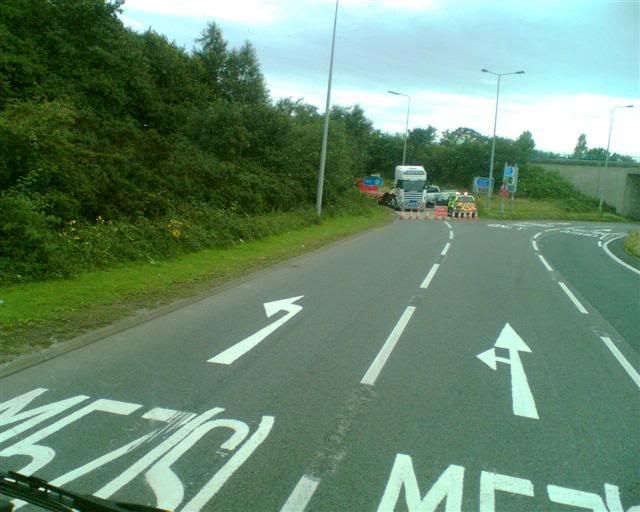
Blocked.
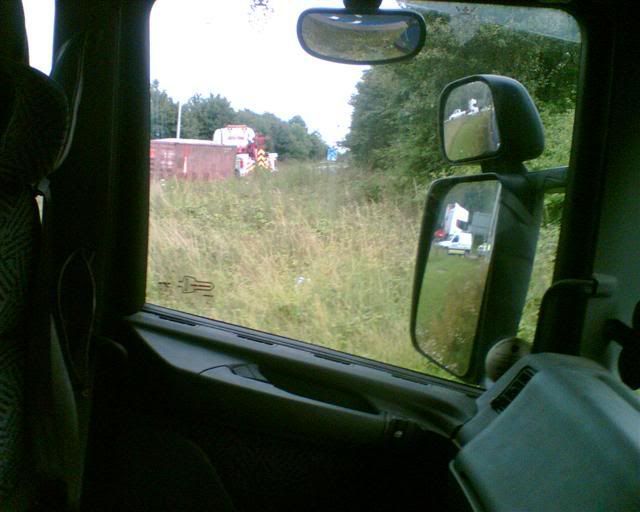
A container lorry has gone over. So, lets have a look the next day.
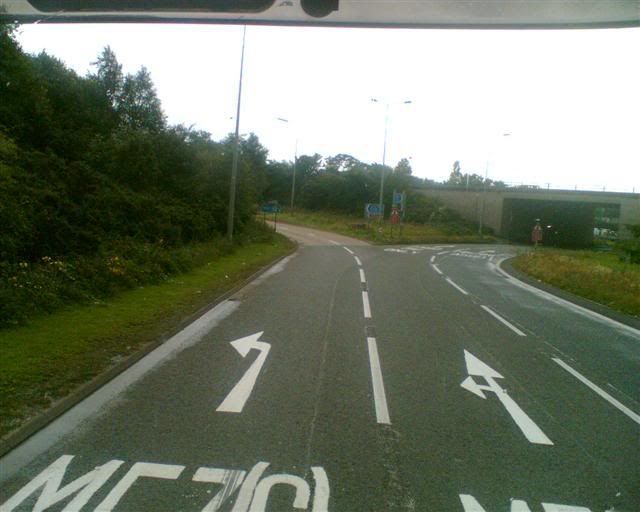
And here’s where he went
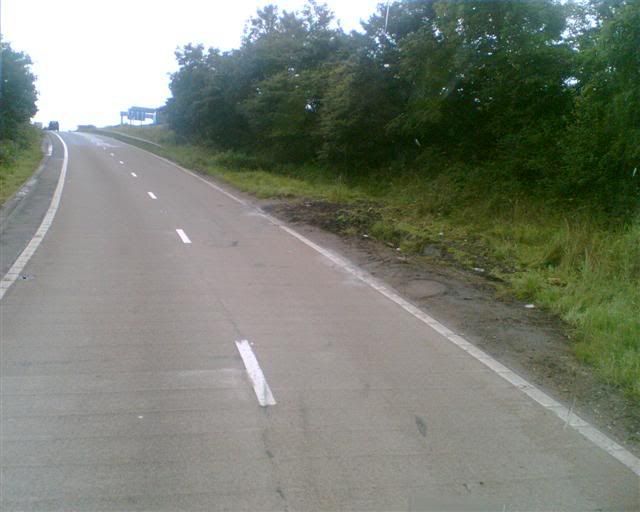
Mow i know that some people are going to say, lets not blame anyone until you get the facts. Maybe thats right. But here’s another fact, i would guarantee that i (and many others reading) could get a lorry and any load round that bend , every time without it going over. A few weeks previous i seen another lorry at the next junction down, he’d gone right over and well off into the verge. A few months previous a scrap metal lorry came from the M62 headed down for the docks i presume and he toppled over onto a car, that killed the lady driver that the truck ‘fell’ onto. I suppose we only hear of the ones that make the news when they block some main arterial route into or around London, courtesy of BBC radio 2, but they go over like nine pins all around the country on almost a daily basis.
I’ve also seen loads (pardon the pun) of trucks spilling their cargo recently, and all with Police attendance. I’m not sure if they get prosecuted or what.
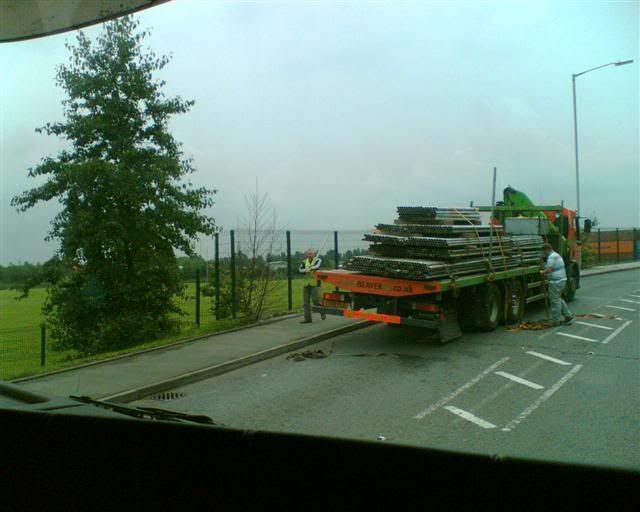
Looks to me like fatty should have had all them straps out BEFORE his poles fell off and not after !! And here’s the coppers in attendance to make sure we’re all safe !
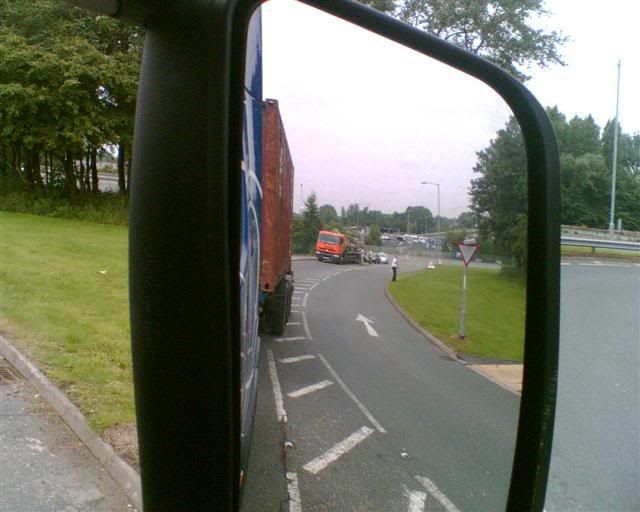
Well the only rolling over i intend on doing is under my duvet covers in about 20 minutes , just after i’ve made sure everything is strapped on !!!